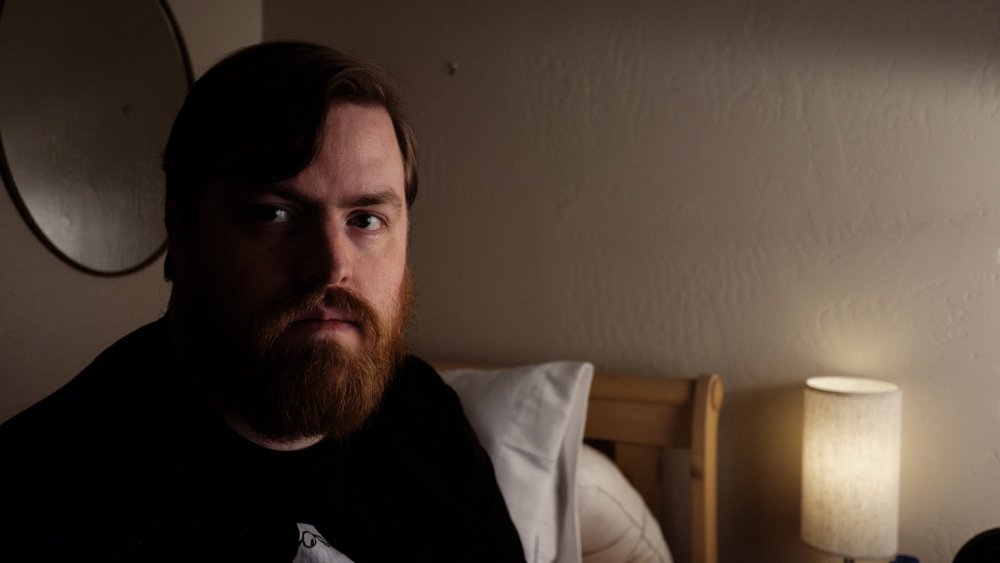Leaderboard
Popular Content
Showing content with the highest reputation on 02/20/2022 in all areas
-
Canon C70 User Experience
Adept and 5 others reacted to herein2020 for a topic
I can tell already this post will be long and probably ramble a bit so I will apologize in advance 🙂. For me, purchasing the C70 was a years in the making decision because I do not make new camera purchases lightly. My goal with a camera body purchase is that it fits with minimal additional investment into my existing camera ecosystem, it will perform its purpose for at least 5 years, and it will handle my specific type of projects. Everything in this post is based on my own personal style of shooting, the types of projects that I get hired to do, and the gear that I already have. I am also posting this after owning the camera for less than 48hrs so my views may change over time. After using the camera on a single shoot, I thought about how I would describe it in a single word.....and quirky keeps coming to mind. I'll get to more on that later, but in comparison to my current favorite camera, the Panasonic S5 I would describe the S5 in a single word as frustrating. The S5 is so close to being perfect, yet the AF finally pushed me back to Canon. Since I have called it (and continue to call it) quirky, let start there. Here is my list of things that I just find strange about the camera: The Mount - the mount is without a doubt the strangest mixture of FF, crop sensor, RF, and EF that I've ever encountered. I bought the 0.71 Canon speed booster so that I can use my EF lenses but with it mounted I cannot use my EF-S lenses. For EF-S lenses I also need to buy the straight through adapter. I have no RF lenses and probably won't have any for years so EF and EF-S is it for me. I would like for the speedbooster to live on the camera so I bolted it on because I like the extra stability, but that means I can't use the Sigma EF-S at all unless I want to either leave the speedbooster unbolted or or fiddle with removing it while on set. Speedbooster - Yes, the speedbooster gives you a stop of light with EF glass, but the DOF remains the original DOF. Additionally, I saw some sample videos where the speedbooster decreases contrast and saturation in strongly backlit scenarios due to the extra glass elements, it also decreases the AF area for EF lenses. Not sure if this is also the case for EF-S lenses. It is great for providing a FF FOV, but it still falls into the quirky category for me. Storage - this one hit me before the camera ever arrived. I planned on buying 1TB SD cards due to the data rates but discovered that there is no such thing for V90 cards. In fact, the largest V90 cards I could find were 256GB which means now I have to worry about running out of space; something I haven't even thought about for years. Speaking of V90 cards, they are actually crazy expensive when compared to the typical V30 cards. So now I have a camera that can go up to Canon RAW yet no way to store the footage in the camera. I know I could use an external recorder, but I like the dual slot redundancy and the compactness of doing everything in body. Even V60 512GB SD cards are nowhere to be found. Such a strange problem to have in 2022. Lens IS + Digital IS - The C70 does not let you turn off lens IS and keep the digital IS on, no idea why but I discovered that during my brief testing. I wanted to test the difference in lens IS vs digital IS with the same lens but you can't have digital IS on and lens IS off. OK, so here for me is what I find is just bad about the camera so far. Once again, this is due to my own personal workflow and my shooting style, for bigger crews and different shooting environments this may or may not be something you care about at all. Firmware Bug - Yep, within 20min of turning it on I found what I believe is a firmware bug and I currently have a Canon CPS case open for it. I shoot a lot of content that goes on both YT (16:9) and IG (4:5), so instead of shooting vertical which would mean it would only work on social media, I shoot landscape and display 4:5 aspect ratio guides on screen so that I know what would fit perfectly on IG. My customers love this, I deliver them two versions of the video and both fit perfectly on their respective platforms. I set this up on the S5 and I checked before buying the C70 that it had the capability to configure custom aspect guides as well. So while setting up the C70 I went into the aspect guide menu > custom > and started inputting my guide ratio. What I found out is that there is a bug and you can only change the left side of the guide. So I can set up 2:1, or 4:1 but there is no way to change the 1 on the right side. I called CPS and they couldn't figure it out either, so they opened a case for me. Fortunately, I have been using the guides with the S5 for so long that I kind of know from memory how to frame 4:5 within 16:9 but it is very annoying to say the least for this not to work. Flip Screen Quality - This is a real thing, terrible quality, very flimsy and the worst physical part of the camera. I can only hope it does not break and if it does I hope it breaks when I don't have a job lined up and while it is still under warranty. I avoided flip screens for years because I thought they would be flimsy, my first camera with a flip screen was the GH5 and now in 2022 Canon found a way to confirm my worst fears about flimsy flip screens. By comparison the R6, S5, and GH5 all had great high quality flip screens. Stabilization - this is a big one and anyone who knows me knew this was coming and I know cinema cameras do not have IBIS, I knew the C70 did not have it before buying it, but it is still a downside in my book for this camera. It's one thing to not have it for cameras that are too big to hand hold, but when you market a cinema camera as being handheld and give it a DSLR form factor IBIS would be great. I will say that I never knew how good lens stabilization was until I shot with the C70, if you have a stabilized lens and turn off the Digital IS it is almost as stable as IBIS. When it comes to digital IS, I simply do not trust it and feel like it makes the footage jittery so I only use if I don't have a stabilized lens on the camera. Speaking of stabilized lenses, I discovered my favorite video lens (Sigma ART F1.4 50mm) does not have lens IS which makes the S5's IBIS even more impressive in my book. I had no idea that none of the 50mm EF lenses offer stabilization and neither does most Canon EF lenses. So now I am stuck with no IBIS, and only the Canon 24-105mm F4 and the Canon 24mm F2.8 for stabilized lenses options. Horizon Level - Yes I know no Canon cinema camera has this (I think the C500 does but not sure), but it is still really annoying to have to keep checking the edges of my screen and guides to try to keep the camera level. It is easy when it is on a tripod and there's plenty around to line up with, but when you are hand holding it is one more thing to try to guess at. I use the horizon level religiously with every other camera. I would think this might be able to be added via firmware, I'm guessing it has a gyro since it provides digital stabilization but not certain of this. Flip Screen Visibility - The flip screen looks great indoors but completely disappears outdoors, no possible way to see much more than an outline of what you are shooting even with a monitoring LUT enabled. This means an external monitor is almost required and for gimbal work you pretty much just have to hope you are pointed in the right direction. Indoors it is great. The Fan - I know, I know, it is required to keep it cool...but I live in FL (where everything overheats so the fan is even more important lol), but living in FL I also shoot a lot on beaches with the wind blowing and sand going everywhere. That fan is my worst nightmare in that scenario. I really don't know yet what I am going to do for those shoots, I may just use the S5 whenever a dusty or sandy environment like that is required. The Joystick - the joystick is nearly impossible to use. You can navigate left/right/up/down ok, but if you try to press it to select a menu item it typically jumps to a different screen, very hard to precisely press it. I started using the Set button in the thumbwheel instead to select menu options. It is not all bad, and I will say up front that I do not regret my purchase (not yet), so for me (so far) the good outweighs the bad: Internal ND Filters - those glorious internal ND filters make me smile every time I press the button. I almost like them more than I like the sensor and image quality. Being able to dial in an exposure with the press of a few buttons is nothing short of awesome. Gimbal Balancing - I watched a ton of YT videos and bought counterweights and a clamp for my Ronin S because I didn't think it would balance otherwise. Well, it turns out that with my gimbal lens (Canon EF 24mm F2.8) it balances with no problems. The arms are at their outer limits, but it does balance properly. I was able to balance the Sigma EF 50mm as well but not properly and the motors had to engage just to keep the horizon level...not a good situation. Sensor - This one is a given, all of the spec charts and YT videos in the world can't compare to just shooting with the camera with your style of shooting. The sensor is more than sufficient for everything I need do and I tested right away a model backlit by direct sunlight and the image was good enough for me. It did wash out a bit but it wasn't as bad as I thought it would be. CODEC - Yesterday I shot mostly 30FPS and 60FPS and the XF-AVC codec was actually easier to edit than the H.265 footage coming out of my S5. I wasn't sure if I was going to be able to edit it and Davinci Resolve along with my editing setup handles it with no problem. Ironically the hardest footage to edit on my system is GoPro footage. Ecosystem - This one is important to me and since I have a lot of Canon glass and XLR audio equipment it was important that it fit into my existing ecosystem. I picked up a shotgun mini XLR mic for on camera work, a cage, a DTAP to C70 power cable, the speedbooster, v90 cards, and that was it. It fit perfectly into the rest of my gear. Integrated XLR Audio - Obviously this is great to have, no more finicky adapters to deal with. The mini-XLR jack isn't that big of a deal to me, my new on camera mic is mini-XLR, and I bought adapter cables for the rest of my equipment. Build Quality - I was actually expecting worse build quality than it has after seeing so many people complain about it. It's not great, it definitely is not as nice as my S5, GH5, C200, or 5DIV, but for what you get I think its not bad. The buttons feel a bit cheap when you press them but as long as they work I don't really care. Auto-Focus - having AF is just wonderful....ANY AF is better than NONE, and this will be the first video camera I have owned that I can somewhat handhold and have AF at the same time. I know everyone is saying it is not that good, but to me it is great. I just set it to large area AF and kept the box on the subject and it did the rest. I already know in lowlight it won't work well or with certain skin tones but the focus peaking is so good that I am actually looking forward to MF for those situations. Exposure Tools - Obviously there are a ton of them, I thought I had my setup all figured out but during the shoot I ended up just using the WFM because it was the only thing I could see in the sunlight and it worked well. Battery Life - The battery life is decent, 1.5hrs shows on the meter when I first turn on the camera. With the DTAP to C70 cable I can connect the camera to my VMOUNT battery which can probably power it for at least 4hrs. OTHER CAMERAS Before buying the C70, I did a lot of research and comparisons to other cameras that I felt could meet my needs, the list below is arranged from closest to furthest for how close they came to what I was looking for: Canon R5C - This was the number 1 contender, but for me there were too many compromises. No internal ND filters, adapter required for XLR audio (the adapter BTW that even further shortened the already terrible battery life), the weird USB PD power requirements, the terrible battery life, and no IBIS ruined this one for me. If it had IBIS or an eND filter system I probably would have picked it over the C70. Canon R3 - Interesting camera but no ND filters, would need the adapter for XLR audio (adding to the price), no video exposure tools, no good codecs, and cost a ton of money for that fast readout sensor that I would never need since I don't shoot sports. Canon R5 - No XLR inputs, no ND filters, no video tools, terrible codecs, and that horrible overheating issue that just won't go away after all the firmware updates eliminated this one from my list. Panasonic - All of their cameras have no useable AF, so as much as I love my S5 in every other way, there's no way I am buying another one unless their AF system changes. Sony - that's a whole different world for me and different ecosystem which doesn't interest me at all. Nikon - looked interesting but I know nothing about Nikon and feel like they are one foot from the grave (kind of like Panasonic for that matter). I am sure they make good cameras but I don't feel like learning their ecosystem, also I would have been paying for that sensor and XLR adapter similar to the R3. FIRST SHOOT EXPERIENCE My first shoot was almost comically bad. I got the camera late on Friday, went through all of the menus and watched YouTube C70 setup videos until 3AM, then got up and did my first paying shoot with it at 10AM. Also, the cage did not come on time so I really felt out of place hand holding it without a cage or side handles and nowhere to mount a top handle or mic. I thought I had figured everything out....I was going to use the Zebras at 45% to expose the skin tones, use digital IS for the 50mm, and use only lens IS with the 24-105mm. I set up my favorites menu with AF mode, Zebras on/off, and framerate. I also balanced it on the Ronin S with the 24mm F2.8. As soon as the shoot started I realized the zebras were impossible to see in the sunlight, I forgot to turn on digital IS when switching to the 50mm, and without the zebras I had no idea if I was exposing properly. So I switched to the WFM, gave up on the skin tones, and kept it in the middle of the WFM. After the shoot I checked out the handheld and gimbal footage and it wasn't as bad as I thought. I ended up throwing away much less shaky footage than a typical S5 shoot where I have to throw away out of focus footage. The subject for this shoot moved around quite a bit and my S5 keeper footage rate would have been way lower. I also ended up buying the Buttery C70 LUT pack to get the initial grade. Sound It Out Films did a great YT review on LUTS and the Buttery one looked like it had the best starting point for the Rec.709 grade. I do not like their creative LUTS though because they added them into the Rec.709 grade vs separating them so you can't use them for all of your footage from different cameras from a shoot. But their Rec.709 primary grade is the best looking to me. LEARNING EXPERIENCE I still really need to learn how to properly expose CLOG2 with the C70. I think I did OK on my first shoot, my false color LUT shows me that for the most part I was able to get the exposure where it needed to be, but I definitely need more experience with CLOG2. The totally confusing area for me is the AF, I watched tons of YT videos but the whole area AF with subject tracking turned on confuses me. When whole area AF is on and subject tracking is on, boxes are flying all over the screen, it seems to be tracking things even though I did not tap the screen so I am not sure if it is just showing me what it decides should be in focus or if it is actively tracking something. I also don't really understand the logic behind whole area AF, how it works and when it breaks so I need to test that feature a lot more. WRAP-UP For my needs the C70 is a great "quirky" camera that I think was worth it. I hope to get at least 5yrs of use out of it, but TBH with you my main concern now is how to get V90 cards big enough to store long form content. I don't see 256GB cards lasting through an 8hr day. I may actually test V30 cards at its lowest bitrate settings or even 2K @ 30FPS for long form talking head content. An annoying problem to have in 2022 and out of all of my problems with this camera, that's one I never saw coming. So far it definitely seems like it was worth it, but time will tell. I still don't think it can replace my S5, when I need to travel light, work in dusty environments, or I'm on a shoot with a budget that just isn't high enough to bring the C70, I will probably still use the S5.6 points -
Panasonic GH6
Juank and 4 others reacted to androidlad for a topic
5 points -
Ha, just read Andrew's tweet: "OM-1 is a nice camera but will sell exactly 0 units at £2000" Well one muppet has pre-ordered a pair so we're 2 up on your 0 already 😉4 points
-

Associated Press / Sony deal weirdness
Marcio Kabke Pinheiro and 2 others reacted to BTM_Pix for a topic
--------- Clause 18.2 - Importation Location Marking For Overseas Imports In compliance with AP's standard terms and conditions for procurement, any and all items of equipment supplied under this contract that are not of US origin must be clearly and prominently marked with an easily understood reference to denote the State used for the initial importation into the US. In the case of this particular contract, all equipment will have its initial port of entry to be in the State Of New York and should be marked accordingly. ----------3 points -

Olympus OM-1
Jimmy G and 2 others reacted to webrunner5 for a topic
Well I have a Lot of experience of riding around Naples late at night in a Fiat 500 taxi, and you will notice the one in the picture has no mirror and that is for good reason, they would not have fit in the street going 65 kilometers or more at night with their lights off. Even drunk it was some damn scary stuff I tell you.3 points -
Particularly in the context of how much MFT cameras have bulked up beyond all recognition - not to mention arguably beyond all rational raison d'être of the original concept - in the past few years. Its all very much in the Fiat 500 envelope. On that basis, they might as well be just go and add a bit more to make it infinitely more useful. I don't buy cost as being a factor either as the cameras have bloated so much price wise along with the physical size as well so if people are willing to €2500 on an MFT body then I don't see it being a barrier to spend €200 more to get internal ND.3 points
-
I had a brief play with an OM-1 today (my local camera store had an 'Olympus Day' with an OM Systems rep in attendance). Nice camera - feels very much like an E-M1 mk2/mk3 in the hand - as expected. The new EVF is lovely - larger/sharper/smoother and nicer looking/less obtrusive graphics. The new menu system looks good too (and is a long overdue redesign, I think). It had the new 12-40mm 2.8 mk ii lens on it, so I tried it recording 4k60p with 'medium area' C-AF, shutter priority and (I think/assume) auto-ISO selected. I panned it back and forth between close focus inside the store to infinity outside in sunshine - nice smooth refocusing and exposure changes every time and the IBIS seemed very good - basically as expected. I was a bit disappointed that (in video mode) it only appeared to offer a choice of four sizes of rectangular focus areas (centre, small, medium and full area) - I was expecting it to offer the same choice of focus areas & shapes as in stills mode (i.e. like my Pana G9 does). Asked the rep about this and he confirmed the limitation and that he'd pass my comments on to OM Systems. Note this is for the basic video C-AF - AFAIK touch-AF, tracking, subject recognition etc. can all be used for video, but I didn't try those. Overall - based on a 10 minute play with it, of course - I think OM Systems have a very nice camera in the OM-1, and (particularly if you need a weather sealed, relatively small and light hybrid camera system) it feels probably worth the price. Question is - do I really *need* to replace my G9 + E-M1 mk ii combo with an OM-1, or am I just suffering from GAS? 😀3 points
-
Olympus OM-1
Mark Romero 2 and one other reacted to PannySVHS for a topic
Rolling shutter, battery life, weather sealed body, superior Ibis, compactness of lenses..2 points -

Olympus OM-1
Mark Romero 2 and one other reacted to John Matthews for a topic
I just replied to Andrew's tweet: "I'll go the opposite direction and it will be sold out by the shipping date." Here's what @Mattias Burling just said: "I visited my local camera shop. The owner was surprised at the high interest in the OM1 among his regulars, that are mostly still using pro DSLRs. The low price was what made them consider it. I haven’t read a single article about it so I don’t know. It’s just what he told me."2 points -
Olympus OM-1
John Matthews and one other reacted to Jimmy G for a topic
It will be interesting to see his follow-up video next week with the viewer's voting results, thanks for posting that link! OT - Oh my! Seeing that 500 made me laugh! LOL After filming the 7-second annular eclipse across the water from Clemson University back in '84 my brother and I barnstormed and hot-dogged our way through the Smoky Mountains in his "Fix It Again, Tony" 500 on our ride home! Talk about a youthful sense of personal indestructibility! Ahahahah!2 points -

Panasonic GH6
jsandas and one other reacted to hyalinejim for a topic
Yes, but (and for the benefit of anyone reading who might be considering a GH5) if you shoot VLog and get your footage into ACES space there are no WB or exposure quirks. The colour science is not so easily answered, however there is one solution in my other recent thread.2 points -

Panasonic GH6
jsandas and one other reacted to hyalinejim for a topic
Have you tried WBing GH5 10bit VLog in an ACES colour space? You should be able to do it with relative impunity. I know there's no GH5 IDT, but you can sandwich Vlog to ACES to VLog and get your footage back to what it was, but with WB fixed. Incidentally, I don't think that GH5 VLog should be treated as Rec709 gamut. Admittedly, converting to V-Gamut gives slightly wonky colour (slightly pink skin) but leaving it as is gives much worse (horribly green skin).2 points -

Olympus OM-1
Juank and one other reacted to Andrew Reid for a topic
It doesn't take up a huge amount of room either, the diameter of the front of the camera is only a bit bigger than your average EF lens. I wish the camera companies would recognise the importance of this mechanism and put it in. Canon C70 manages it. FS5 does it. It's the Japanese obsession with small widgets that stops it from going into mirrorless cameras. Just make them 10% bigger and be done with it.2 points -
First -and only- UW reel on the internet taken with the Canon C70 showing the capabilities of the camera.1 point
-

Lenses
webrunner5 reacted to noone for a topic
I have had a LOT of 85mm lenses FD 1.2 L, Nikon 1.8, Sony FE 85 1.8, Sony A mount 85 2.8, Minolta 85 1.7 (I thhink?) and from a photographers point of view (not so much video), the GM is light years better than any of the others and I loved the FE and the FD ones. I can not wait to find portrait victims and use it (and do a comparison test against other portrait lenses i have). The GM is expensive and does make noises when focusing (not as bad as i expected reading reviews but it is there) but is very sharp and 11 rounded blades make for lovely bokeh even stopped down a bit.1 point -
It's too long ago for me to remember accurately, but mostly I think they dried up. Of course, in a lens it's more complicated because you shouldn't humidify them too much or you'll get fungus. Also, when @PannySVHS says the rubber "dissolved" that's something I think is literally true - which is very different to rubber drying out. It's probably a case of reading the advice from known good sources, which considering the level of completely wrong info posted all over the internet about it, I'd only get from lens manufacturers directly.1 point
-
Olympus OM-1
John Matthews reacted to PannySVHS for a topic
I want this camera too. Why, oh why? The elegant appearance of the camera body and the AF. Never was interested in AF. But imagining that a tasty 17mm 1.8 could work flawlessy in AF gives me an appetite for this camera. Interested to see if HD 240fps is oversharpened or not, if low light video is without mushy noise reduction, if codec is at least as good as on the Gh5 is in good light. Super16 crop, open gate mode would be great. Battery life seems promising. Then this is a want to buy camera. Oh, mini Hdmi, yikes.1 point -
Here is my nFd 28mm f2.8 in action. It especially shines wide open for close ups of faces on 0.71 speedboosted M43. I did this video couple years ago and I posted it before on this forum. Grading is a bit over the top and too much to handle for the humble Lumix G6 But anyhow, to illustrate the magical goodness of this affordable plasticy Canon Fd 28mm 2.81 point
-
Bump, like the one on the OM Systems "Olympus" OM1. But indeed a thread bump. Impatience is a good friend of mine when it comes to seeing passion video pieces done as labor of love.😊1 point
-
Olympus OM-1
Juank reacted to Mark Romero 2 for a topic
If we are both thinking of the same video (the one from Japan) then the saddest part was that the autofocus tests were shot at 60fps / 1/100th shutter speed, and in a high-contrast profile, which normally is the BEST case situation for Panasonic Autofocus. Which means that autofocus when shooting V-LOG at 24 / 25 / 30fps is going to be... not good...1 point -
I didn't mind it too much as in it wasn't a deal-breaker but instead, a 'known compromise'. In some ways, it was quite good, ie, ergos and stability etc...but actually, it was a bit of a beast to handhold for very long and so I had already decided to go back to using it on a monopod most of the time. Anyway, no longer an issue as the courier collects tomorrow and then it's just a case of wait and see when the replacements turn up.1 point
-
Well, I'm always reluctant to take early specs and speculations to heart, relying on a video blogger's "leak" and created (unsourced) simplistic graphical representation is (along with any other information being provided) guesswork, at best. Hopefully, Panasonic will be tooting their own horn with some technical background information or white paper with this camera's release. Fingers crossed on them doing so, until then I'll file the above image in my "if it can be believed" drawer. In the meantime, I'll be chewing on some popcorn hoping that Panasonic finally releases the dual-gain technology they've actually been working on for a long, long time... Image Sensors World: Panasonic 123dB WDR Organic Sensor http://image-sensors-world.blogspot.com/2016/02/panasonic-123db-wdr-organic-sensor.html1 point
-
Olympus OM-1
John Matthews reacted to Video Hummus for a topic
Nice! Looking forward to hearing your experience with the OM-1. From what I have seen, the video AF on the OM-1 is pretty solid. Honestly, the OM-1 has been made 3x more interesting BECAUSE Panasonic didn't put PDAF in the GH6. It's still a pulsing mess from the leaked video. I still think OM Systems could capitalize on this by releasing a more video focused camera that has PDAF. I'm sure a lot of GH5 users would take notice.1 point -

Olympus OM-1
Jimmy G reacted to John Matthews for a topic
Mike Lane is a wildlife photography who has some interesting thoughts regarding photography with long lenses and image quality.1 point -

Associated Press / Sony deal weirdness
Andrew Reid reacted to kye for a topic
How to circumvent a rigid procurement process... 101. "It was an open tender - honest!"1 point -

Panasonic GH6
billdoubleu reacted to kye for a topic
I'm still not convinced about this. Yes, they do say: "Nothing is "baked" into an ARRIRAW image: Image processing steps like de-Bayer, white balance, sensitivity, up-sampling or down-sampling, which are irreversibly applied in-camera for compressed recording, HD-SDI outputs, and the viewfinder image, are not applied to ARRIRAW. All these parameters can be applied to the image in post." However, immediately before that, they say: "For the absolute best in image quality, for the greatest flexibility in post, and for safest archiving, the 16-bit (linear) raw data stream from the sensor can be recorded as 12-bit (log) ARRIRAW files." So in this sense, the "nothing" baked into the ARRIRAW includes the combination of two streams of ADC and also a colour space conversion. It's perfectly possible to do whatever you like to the image and still have the first statement be true in a figurative sense, which is how they have obviously intended it - "nothing you don't want baked in is baked in". The ARRI colour science could still well be baked in and no-one would be critical and the statement they make would still be true in that figurative sense. To me, the proof is in the pudding, and even that Alexa vs LF test included small and subtle shifts between the two images that is unexplained by the difference in lenses. That doesn't mean you care about colour as much as I do, or see it in the way I do. The fact you can hire a colourist means that the colour science from the manufacturer means less as you can cover any shortfall by hiring a pro, I don't have that luxury unfortunately, and thus why the colour science has a greater impact to me. I suspect most people buying a GH6 also probably don't have regular access to a colourist to take up any shortfalls. Ironically, the cheaper the camera the more that someone would need to have more latitude, great colour science, and a solid codec to work with. By having the best image come from a camera that costs $100K you're giving the most robust image to the very people who need it least as they can afford to use the camera at its exact sweet spot and not need any of its latitude. Agreed, and being skeptical makes sense. Realistically I'd be happy with any log colour space as long as it's a standard that is supported by ACES or RCM. Like I said, the folks with access to higher-end equipment and colourists for backup and troubleshooting swap to the higher budget stuff when the going gets tough, but those of us who don't have that luxury are stuck with what we have and have to make the best of it without any backup. But when we suggest that we'd prefer things that make our lives easier (robust colour science, codecs, DR, ISO performance, etc) rather than things that don't really help in difficult situations (resolution, etc) somehow that doesn't make sense to the people that aren't in our shoes? I think the top comment on the Alexa vs LF video is the most telling.... "Based on image aesthetics I'd go with the 65, but based on my budget I went with my Panasonic G7." Expecting ARRI level images from a GH6 is definitely unrealistic. But I mention it for precisely the same reason you mention wanting more DR - the better they can make it the better our results will be. Magic Lantern gives options for 14-bit RAW on the 5D and also on my 700D, so I'm assuming that the Canon sensors have a 14-bit output. I'd assume that means it's not that difficult to do - after all the 5D isn't a new camera by any means! According to CineD the GH5 gets 9.7/10.8 stops, the OG BMPCC gets 11.2/12.5, the S1H gets 12.7/13.8 and the Alexa gets 14/15.3. I really notice a difference between the GH5 and OG BMPCC, and obviously the S1H is significantly more again. Have you shot with an Alexa? If so I'm curious to hear if you noticed any differences from the extra DR when using them? Obviously there's an amount of DR that would be "enough" for almost all situations, and I'm curious to know where that amount is. I'm also skeptical about motion artefacts that would come from non-sequential exposures. I guess we'll see. It might be more useful in situations where motion blur isn't significant and extra DR is, for example locked-off shots of architecture and the like. You could easily have it take a set of images around the 1/1000s mark, perhaps at 300fps, and then combine them. That would give you great DR to include the highlights in the sky etc. Based on your logic about 12-bit ADC being a limitation and new sensor tech being required it will be interesting to see what this new sensor can do. Only a few sleeps left until the formal announcement!1 point -

CanonRumors owner decides to quit
newfoundmass reacted to Andrew Reid for a topic
He didn't go into detail or put any more out on Twitter as it would jeopardise the sale of the site. That's what he told me. Hopefully when he is 100% out of the industry he will be able to blow the whistle. If he doesn't, I'll be disappointed.1 point -
Olympus OM-1
John Matthews reacted to hoodlum for a topic
This video compares the out of camera JPEGs but also the RAW files in Adobe, CaptureOne and OM Workspace between the OM1 and the EM1iii at ISO 25600. The RAW file comparison clearly shows less color noise and greater DR with the OM1 from all 3 RAW editors.1 point -
Olympus OM-1
Juank reacted to Video Hummus for a topic
I bet if they just took the S1H body, swapped the sensor with MFT one, and removed the shutter they would have plenty of room for a ND. Call it the GH6S. It would probably sell like crazy.1 point -
I just went back and checked, and saw that Andrew raised the question of built-in ND filters in his interview with Panasonic's Yosuke Yamane last year, and if I understand the reply correctly, Yamane basically claimed that a built-in filter would negatively affect either the image quality (if it's always there?) or the size of the camera (if it can be moved aside?). This is probably true in itself, but I think they underestimate how many people would be willing to make that tradeoff. As for the OM-1, the live ND function is entirely done through software, isn't it? I know that it only works for stills, but I wonder how far away we are from that sort of thing being viable for video.1 point
-
On some Fds, the brass bearings are coated in rubber and the rubber dissolves over time. It does not affect every copy it seems (or at least some take much longer for it to happen). It happened with my 85 1.2 L and I just gave the lens away to the bloke I sold my FD24 1.4 L too (that did not have the bearing issue) and I got a Sony GM 85 1.4 from the buyer as well as some cash. I could still use the FD 85 but it was very annoying that the focus was very loose and the GM 85 1.4 is spectacular to me by comparison so was never going to use it again anyway. Some of those FD 24 1.4 asphercials have sold for around $20,000 which is plain nuts!1 point
-
Panasonic GH6
Juank reacted to Caleb Genheimer for a topic
Yes, Canon is doing something similar. They’ve definitely broken the 12-stop barrier, but most tests show the C70/C300III still underperform versus the ALEV sensors. Regardless, I’d rank those two cameras over even RED/Sony/Panny cinema cameras for this exact reason. I debated heavily on S1H vs C70 last year, but landed on the S1H for the 24X36 Open Gate mode, because I primarily shoot anamorphic, and wanted to get into large format scope capture. I’m happy enough with my S1H to never sell it. The only other digital camera I’ve kept is my GH2. A Samsung NX1, GH5S, and Pocket 4K have all come and gone. I also agree that the GH6 really needs to have properly implemented V-Log to differentiate from previous models. Going from V-Log L on the GH5S to full V-Log on the S1H was a paradigm shift, and I wouldn’t go backwards after having it. I don’t mind M4/3 sensors from a size perspective, but they DO struggle to implement the same imaging pipelines that often accompany larger sensors. I’d be considering a GH6 for b-cam if it had full V-Log, but without that, I’ll pass.1 point -
Canon have managed to reverse-engineer the tech: Canon has published its white paper regarding the technology implemented on its newest cameras (C300 Mark III and C70) which is the Dual Gain Output (DGO) that allows 16 stops of dynamic range. The technology utilizes the same concept being used in the ARRI cameras for more than 10 years. Learn more below. https://ymcinema.com/2020/09/27/canon-releases-the-dual-gain-output-dgo-4k-sensor-white-paper/1 point
-
Which cameras have the most pleasing grain structure?
PannySVHS reacted to QuickHitRecord for a topic
That was smart! I wish I had purchased more than one roll. It looks like B&H are sold out again after less than a week. Last time they were without for at least six months.1 point -
Panasonic GH6
Juank reacted to Caleb Genheimer for a topic
I agree that the Alexa sensor is definitely “gold standard,” but also that expecting that kind of performance out of something like a GH6 is a bit unrealistic. That being said, I wish the prosumer camera manufacturers would throw in the towel at around 6K resolution, and begin focusing on dynamic range in video. That directly corresponds to the technology previously discussed: dual gain output photosites. The current limiting factor for basically all prosumer camera DR is the ADC (analog to digital converter) bit depth of 12 bits, which limits performance to 12 stops of DR. Fancy processing can squeeze out a bit extra (like the ~12.7 stops of the S1H,) but that’s the limit. The Alexa sensor’s photosites have TWO ADC each, at different gain settings, in parallel, for simultaneous capture (at the same moment.) The signals from these offset sensitivity ADCs are then combined by the image processor to cover a resulting higher DR. This is entirely possible in a prosumer camera at reasonable bitrates via LOG scale encoding. The real bottleneck is the ADC tech, which is linear in nature. For the vast majority of applications/users, 12-and-change stops is plenty enough to get a satisfactory image with room for flexibility, but those wanting to accurately simulate DR-dependent effects like Bloom, Halation, and flare, it is important to have as much differentiation in the highlights as is possible. I’ve found the S1H to have… enough DR for pretty reasonable halation approximation, providing I expose for the highlights. I’d take two more stops though if another prosumer camera offered it. It sounds like the GH6 is using an entirely different approach to increase DR: sequential offset exposure. That’s not bad, necessarily, but it’s far more computational/AI in nature, and could definitely have motion artifacts. I feel we’re finally at the juncture where the internal codecs and bitrates on prosumer cameras have caught up to the capabilities of the sensors, and it’s time for attention to swing back to the underlying sensor tech for significant improvement. I’m also a bit sad to see the continuing use of DFD AF. Prediction: “3X faster processing” will just mean “3X faster micro jitter.” I’m ready for Tilta or DJI to make a stand-alone TOF/LiDar wireless follow focus AF/focus aid device. The tech is there in the Ronin 4D, and I’d willingly pay several thousand dollars to remove AF from all my future camera body purchase decisions.1 point -
Arri's website: https://www.arri.com/en/learn-help/technology/image-processing Already gave you my thoughts on that.. I shoot RAW/Log, have certified Davinci Trainer experience, work in an ACES workflow, create my own LUTs from scratch, use power grades, film curves, film stock etc.. and when that's not enough, I hire a pro colourist.. so yeah colour matters to me lol.. but does X/Y/Z CS hold me back in any way? Nope. I think the difference between us is as a pro I'm simply not obsessed with matching ARRI CS. Neither are all those you referenced on Netflix that shoot on RED, Varicams, Venices etc. The goal is to have a clear vision for each project/scene. It's then up to DoP, lighting & color grading to take us there. Obviously this greatly varies depending on the budget/job type/talent. Another way to go is creating and loading custom LUTs directly in-cam. Well they messed up / crippled V-Log, a paid upgrade. So until we know more details, I'll remain skeptical. Again with these assumptions. I'm not always working under controlled environments. Plenty of run&gun / docu experience under my belt. I'd never pick a BM for that type of work though. Uncontrolled environment is when I want built-in ND's, DR latitude, flexible ISO/DGO, IBIS/EIS, PDAF etc.1 point
-

Panasonic GH6
Mark Romero 2 reacted to Django for a topic
Ok rather than blame Sony or high-resolution etc.. Let's try and actually tackle the actual IQ/CS situation to understand the bottlenecks and what's at stake shall we? There is much more to CS than sensor manufacturing. Sony make sensors for Sony/Nikon/Fuji/Panasonic yet they all fine tune to their respective CS through image processing. And CS evolves.. for better or for worst depending on personal preference. Some people prefer pre-GH5 color gamuts. Same with Canon, some miss the 5D3/C100/1DC CS.. fortunately Canon bodies allow to set the log color matrix to "Cinema EOS original" or the more ARRI inspired CS "neutral". You get to decide. Every camera manufacturer has its own golden standard. For Sony its Venice and A7S3/FX3/FX6/FX9 allow proper Venice S-gamut3.cine in log but also S-cinetone profile for a baked-in Venice look. For Panasonic, their gold standard is obviously Varicam. But what some may not realise is that GH5's Vlog-L doesn't operate in V-Gamut but in Rec709. So it's kind of a fake Varicam CS. Also seems to dead-end ACES workflow with no appropriate IDT support from Panny AFAIK. You have to step up to S1H for proper V-Log/V-Gamut. ARRI -the Hollywood gold standard- Log C uses Alexa Wide Gamut (AWG) with either 10-bit ProRes 422 or 12-bit ProRes 4444 XQ. AWG works in a much larger colour space than Rec709. The encoding was done with a complete and deep ACES workflow in mind. This whole relationship is what makes for a class-leading grading platform. Other important IQ related aspects are in-camera sharpening and NR. Both seemed to plague GH5. Will be interesting to see if GH6 tackles some of these issues.. we still know nothing of the actual ProRes flavours or if Log is still Vlog-L or proper Vlog/VGamut...1 point -
Thanks @PannySVHS I really enjoyed shooting B&W with that camera. Changing the color to monochrome in the sLog settings seemed to help give the highlights a filmic look due to the higher dynamic range. And as I mentioned earlier, it negated the dreadful sky banding. Before I changed the setting to monochrome in camera, I tested the theory on color footage and as I brought the saturation down, I could see the banding disappear. I like the MonochromeL profile on the GX85 as well. I've been considering buying a camera that I only use for B&W. I suppose the Fuji X-S10 would be kinda perfect for that. Acros Film simulation, or fLog, Super 35, IBIS, high bitrate 2K and 4K. There was something very cool about the RX10ii, though. It felt like some kind of cine-camcorder.1 point
-
Well, my friends, no Eos M as @webrunner5 assumed but GX85 with one shot of S1 in the mix. For the challenge Eos M might be the camera of choice though.:) Still waiting for my Cmount adapter to arrive. The lightest camera setup was with the GX85 and a Canon nFD 28mm 2.8 with a focal reducer, heaviest was the S1 with a Vivtar 90mm F2.5 the famous Bokina lens. I shot this last weekend as a leftover from shooting photos and did an edit and grade today. Lighting with two aperture spotlights, the 300d and an Amaran, plus two extra Fresnel Bowens mount addons, with two 150w dedos in the mix. So I hope you enjoy this as a little appetizer. cheers 🙂1 point
-
Congrats, let us know how that works out for you!1 point
-

Lenses
PannySVHS reacted to Matt Kieley for a topic
1 point -

35mm photo film emulation - LUT design
PannySVHS reacted to hyalinejim for a topic
Indeed! In the case of the GH5 there are only four (and a bit!) above middle grey, which is not a lot really. So even though the camera has maybe 11.5 stops in total, most of those are in the shadows. So if you expose normally for a wide dynamic range scene then highlight clipping becomes very apparent.1 point -

35mm photo film emulation - LUT design
PannySVHS reacted to Benjamin Hilton for a topic
Yeah, totally agree with this. It seems to me that about 12 or so stops of dynamic range is needed if you want a high end look in bright environments. More is always nice, but not really necessary. Like you said, there isn't much of a point always being able to see out of the window. Less than 12 stops can definitely be doable, but seems to always be kind of frustrating, always just clipping out something I wanted to see. That was one of the huge things I noticed in the S1 coming from a GH5. I suddenly realized all most all of my documentary scenes weren't clipping any information I actually wanted. Anytime it clipped it was something I'd expect to be clipped, the sun etc. Pretty crazy stuff!1 point -
My approach is similar to the one projectwoofer described. It consist of two main steps 1. Color correction and conversion from Panasonic V-Log to REC 709 or another color space if step 2 will be executed 2. Color grading creating certain look. For step 1 tried: - Davinci Color Space transform (CST) for Panasonic V-Log to REC 709 - Panasonic provided conversion LUT from V-Log to REC 709 - 3rd parties conversion LUTs in my case from 55Media, which is similar to S1Alex conversion LUTs from V-Log to Arri LogC I can get similar results from all 3 methods but the easiest one and the one giving me slightly better results are correction LUTs from Media55 (Panasonic V-Log to Arri LogC). Also have in my Davinci Resolve node tree, nodes for White Balance, Exposure Correction (primaries), color saturation, contrast and stabilization. Most of the times just perform step 1 and convert from V-log to Arri LogC to REC 709, adjust individually white balance, exposure, saturation etc. on the individual clips if needed and that's good enough for me. Processing all clips this way is easy, fast and gives me good and consistent results. For step 2 tried - some LUTs - Dehancer which works only in Davinci Resolve and gives you great film emulations. Tried some of them on few small projects and so far like the results very much. There are reviews comparing Dehancer to Film Convert and they say Dehancer is a little bit better. For sure you will be able to get great results with Film Convert too. - using some film emulation in Davinci Resolve and more specifically Kodak 2383 print film, which I also like. Juan Melara has LUT and Power Grade for Kodak 2383, one day I may get them. - using this simple trick in Resolve to steal looks from movies or clips that I like. Later may try to replicate the looks with power grades. For most of my projects 70-80% just do color correction / conversion and that's good enough for me. Is it better than Natural Profile in Panasonic S5/S1/S1H ? It looks so for me. Better dynamic range and better control on colors, saturation and ability to use a look / grade. For the rest 20-30% use 2-3 looks that I like using Dehancer, Kodak 2383 and eventually power grades that am working on. Having another 2-3 special looks in future is maybe my limit. Using an individual look / grade for every projects, that's for well funded commercial projects and Hollywood 🙂 Having 3 to 6 looks and using them would be good enough for me. Hope this helps1 point
-
The weight for the Takumar wasn't from a completely reliable source (you don't really find specifications sheets for vintage lenses straight in google) and I wasn't sure of the version either. Takumar do strange things with their versioning - "Super Takumar" and "S-M-C" and "SMC" are all different IIRC, and who knows if it varied from year to year either. Lots of things lost to time around these points in history I think. I have plenty of way heavier things, so I'm with you in terms of things being heavy. If it was heaviest setup of only camera, lens, and adapter, I might give you a run for your money - the GH5 and something like the M42 SB and 200mm F4 Minolta would be right up there. Or others. I have several vintage lenses past 200mm I think 🙂1 point
-
There's no cinema without competent editing and that's not an easy task... People tend to forget it when focus too much on camera specs ; ) Thanks for this thread : ) and heads up to everyone coming here ;- ) - EAG1 point
-
Indeed, Walter Murch is a monument : ) Something I could immediately extract from his testimony, is the cut over the characters' movement -- I think it's one of his finest contributions, obviously, too little to define it: https://www.premiumbeat.com/blog/when-and-where-to-make-the-cut-inspired-by-walter-murchs-in-the-blink-of-an-eye/ https://www.studiobinder.com/blog/walter-murch-rule-of-six/ https://musicbed.com/blog/filmmaking/editing/editing-secrets-from-legendary-editor-walter-murch From a conversation with him: https://www.provideocoalition.com/aotc-murch-bcpc/ More around from: https://blog.filmsupply.com/articles/5-editing-lessons-from-walter-murch/47/ https://www.yoair.com/blog/editing-on-film-how-a-good-cut-creates-an-impactful-message/ And an interesting recent degree thesis about his famous rule of six. Some other important individual I got the chance to have her as one of my instructors at film school but personally in her case along his nice husband the legend John Bailey, is the Lawrence Kasdan and Spielberg's E.T. editor, Carol Littleton. Here's an interview and a free audiobook with her to whom loves her showpieces and cutting work: https://cinemontage.org/silent-revolutionary-carol-littleton/ https://www.audible.com/pd/An-Evening-with-Film-Editor-Carol-Littleton-Audiobook/B002V01IR6 Finally, a last contemporary bibliography reference, another woman and wife of Sam O'Steen (The Graduate, Rosemary's Baby, Chinatown and many others), also available at the Manhattan Edit Workshop BTW as much as the above-mentioned audiobook: https://www.bobbieosteen.com/2020/12/watch-my-panel-inside-the-cutting-room-of-sam-osteen/1 point
-
Interesting hard work, Kye : ) At the film school following a full-time three years program on editing plus a year of internship, we had basically two bibles : Edward Dmytryk Walter Murch (on YT) The invisible editing mannered by the neorealism towards the synthetic contribution to the current contemporary forms seen today, comes essentially along the pioneering effort and findings from three fathers of all this I vividly recommend ; ) Lev Kuleshov Sergei Eisenstein Dziga Vertov1 point
-
Canon Cinema EOS C70 - Ah that explains it then!
PannySVHS reacted to BenEricson for a topic
The C70 is a great image. In the right setting, it definitely looks great. Arri beat it in skin texture, color detail in the shadows, over exposure, color separation, etc. I’ve shot very consistently with the Canon C300 Mk2 for the last 5 years. The C70 is such a close image. I’m sure the OG C300ii would feel very close to the Alexa as well. The DGO sensor is great and all, but the C300 Mk3 / C70 is also 5 years newer than the C300 Mk2. I’m honestly a bit underwhelmed if anything. It’s just so similar. Cleaner... but again, it’s 5 years newer. Things like false color, better auto focus, long GOP, cleaner C-Log2, 4K/60p are all things that impress me more than the DGO sensor. I’ve shot projects where I used the C70 and C300ii next to each other for interviews. For better or for worse, I very much doubt anyone could tell the difference, even when looking at the raw source material. The highlights are great on the C70, but anything pointed into the sun sucks. You get the clipping blob in really bright sources or the sun. Once you see it, you know what to look for and it is always there. Pocket 6K probably does it worse. Komodo a little better. Film handles it by far the best. Ive said this before... but the Long GOP 4k codec on the C70 is so great. You get a cleaner, sharper image than the older generation Canon cameras and it looks really great. The files are also almost 3x as small. I’m interested to see what effect the CRL files will have on the image. If the files are even a little sharper and just a bit noisier / textured, that would be great.1 point -
Bumping this thread because @fuzzynormaldeseves some exposure for the trailer of his new film and unfortunately not enough people visit the Footage section of this site...1 point

